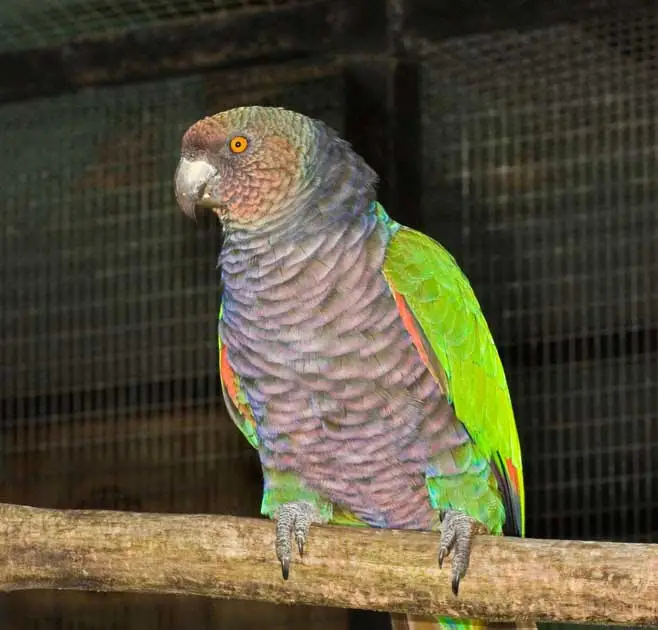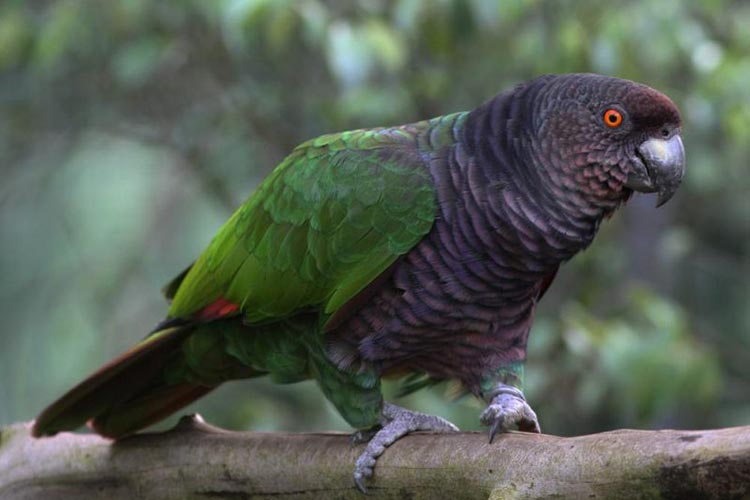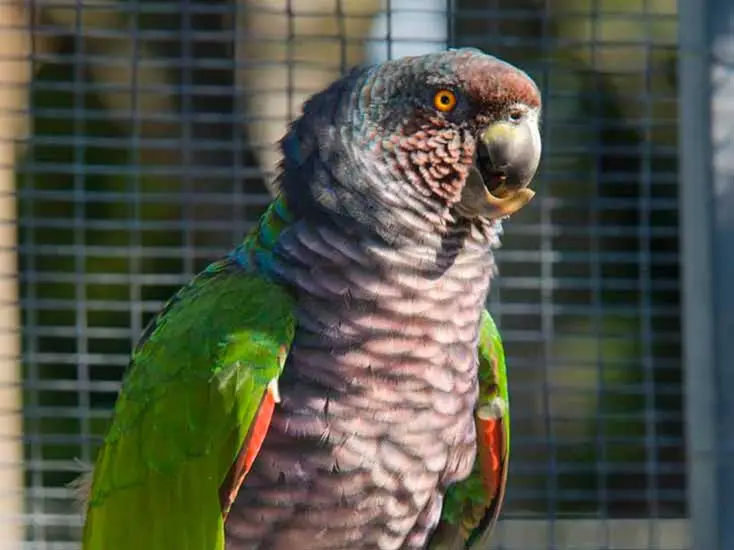
The Sisserou parrot (Amazona imperialis), also known as the Dominican Amazon, Imperial Amazon, or Imperial parrot, is a native to the Caribbean island nation of Dominica. This majestic bird has captivated the hearts of Dominicans, and its image proudly adorns the country’s flag. In this article, we’ll explore the fascinating world of the imperial amazon, its importance as Dominica’s national bird, and the conservation efforts underway to protect this threatened species.
Description of the Sisserou Parrot
Physical appearance
The imperial amazon is a striking bird with predominantly green plumage and black-edged feather tips. It also features a vibrant purple-blue neckband, a dark brown head, and a curved beak. Adult males are slightly larger than females, with males weighing around 900 grams and females averaging 800 grams.
Habitat
Wild imperial amazon parrots are found primarily in the forest of Dominica, with a preference for the Northern Forest Reserve, the Central Forest Reserve, and the Morne Diablotin National Park. This bird inhabits mountain forest areas, especially rainforest at elevations of 600 to 1,300 meters above sea level, and are particularly fond of the upper valley regions of the island. The rainforest tree species in these areas form the birds’ preferred habitat. However, illegal bird trade and other human activities are affecting habitat quality and availability for these rare parrots.
This kind of exotic birds is common in the Carribbean Islands, such as the St Vincent Parrot which is the national bird of Saint Vincent and the Grenadines.

Diet
Sisserou parrots have a diverse diet that includes fruits, seeds, flowers, palm shoots, and young shoots. Their muscular tongue helps them extract seeds from fruit, while their hooked bill allows them to crack open hard nuts.
Lifespan
While the exact life span of the imperial amazon is unknown, it is believed that these birds can live up to 50 years or more in the wild.
The Significance of the Sisserou Parrot
National bird of Dominica
In Dominica, as the island’s national bird, the imperial amazon is an important symbol for the island’s people. Its image is prominently featured on the national flag and various emblems, representing the country’s rich biodiversity and commitment to environmental preservation.
Cultural and historical value
The Sisserou parrot holds significant cultural and historical value for the people of Dominica. It is considered a living symbol of the island’s rich natural heritage and is the subject of various legends and stories passed down through generations.

Conservation Efforts
The imperial amazon is listed as a critically endangered species by the International Union for Conservation of Nature (IUCN) due to its small population, habitat loss, and the threat of illegal captivity.
Protection and preservation efforts of the national bird
The government of Dominica, along with organizations such as the Wildlife and Parks Division, and the Rare Species Conservatory Foundation, and the World Parrot Trust, have been working diligently to protect and preserve the imperial parrot. Initiatives include habitat restoration, anti-poaching efforts, and educational programs aimed at raising awareness about the importance of conserving this unique bird.
The Rare Species Conservatory Foundation is a key player in the conservation of the Imperial Amazon. This organization has been instrumental in conducting research on the bird’s ecology, behavior, and breeding habits, as well as supporting efforts to protect its habitat and raise awareness about the species.

Challenges and threats
The imperial parrot faces numerous challenges and threats, including habitat loss due to deforestation, illegal bird captivity for the pet trade, and competition for nesting sites with other species. Additionally, natural disasters such as hurricanes can severely impact the bird’s habitat, further endangering its population.
Breeding and Mating Habits
Mating behavior
Sisserou parrots are known for their strong pair bonds and extreme faithfulness when parrots mate. If a mate dies, the remaining parrot may grieve to death rather than find a new mate. Despite this, some parrots may seek another mate, but this process can take several years. During the breeding season, the same bird species frequently engages in elaborate courtship displays, including acrobatic flights and vocalizations. Captive breeding programs are also vital in helping to preserve this unique species.
Nesting habits
Nesting occurs between February and June, with Sisserou parrots selecting deep cavity sites inside large rainforest trees as a good quality nesting site. These birds show a strong preference for certain tree species as their preferred habitat, and nesting cavity competition for suitable nesting sites can be intense. The captive bred parrot population benefits from breeding programs, which are essential in helping to preserve this unique species and maintain its preferred habitat.
Reproduction
Sisserou parrots typically lay one or two white eggs per breeding season. Both parents take turns incubating the eggs, which hatch after about 28 days. The chick stage lasts for approximately 12 weeks, during which the parents diligently feed and care for their offspring. Once the chick is fully feathered, it leaves the nest and remains with its parents for several months, learning essential survival skills.

Conclusion
The imperial parrot, or Amazona imperialis, is a stunning and critically endangered bird that holds a special place in the hearts of Dominicans. As the national bird of Dominica, it symbolizes the island’s rich biodiversity and commitment to environmental preservation. Despite the numerous challenges and threats it faces, such as illegal animal trading and population decline, these extremely faithful birds continue to thrive in the island’s mountain rainforest. Dedicated conservation efforts by organizations like the Wildlife and Parks Division and Dominica’s forestry department offer hope for the survival of this majestic Amazona species. The Imperial Amazons symbolize resilience, and with continued support and awareness, the future of this bird can be secured, ensuring that future generations can marvel at the beauty of Dominica’s national treasure.
